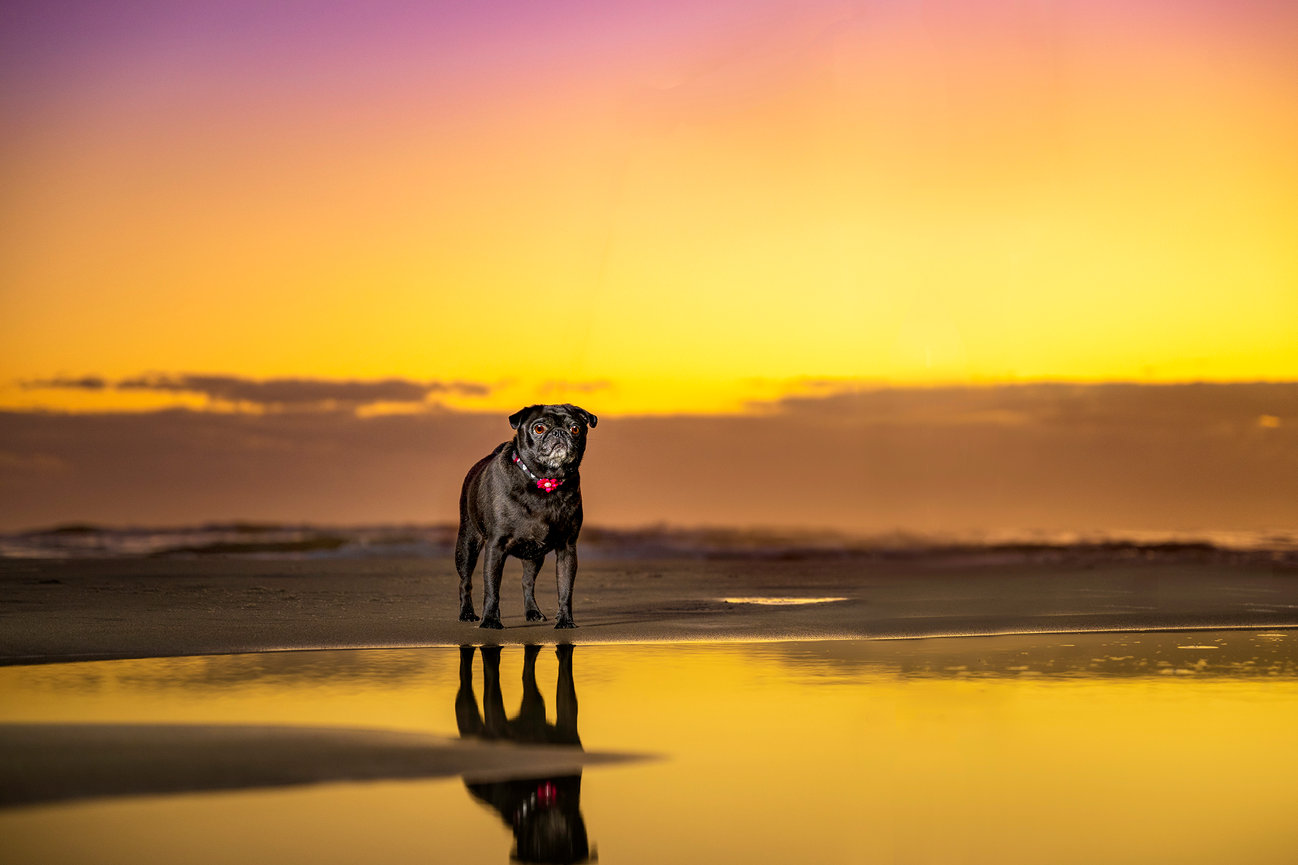THUNDERSTORMS & FIREWORKS: SUMMER'S SCARY SOUNDS
Monday, June 03, 2024 | By: The PAWtographers
NOISE FEARS
If you own a dog who is terrified of loud noises, you are not alone. Studies indicate that between 25 to 50 percent of the pet dog population are affected with fireworks being the most common trigger, followed by thunder and then gunshots.
Anxiety reactions can range from discomfort to traumatising. Of my former pack of five Havanese, one was at the trauma level, one was uncomfortable but manageable, and the other three were unaffected. Our pup who suffered the most, also had cardiopulmonary disease, which studies indicate that dogs with any health condition (kidney, heart, neurological, cognitive disfunction, etc.)
Noise fears are reported to generally appear early with the majority of affected dogs showing signs by the age of two. If there's any good news, it's that onset of noise fears are uncommon after the age of six. Interestingly, if an older dog suddenly developes a fear of noises, studies indicate this a sign of a pain issue.
Priority 1: Welfare & Safety
Keep Your Dog Inside
With estimates ranging from 30 to 60% of loose dogs occuring during fireworks, it seems like a no-brainer to keep your dog inside. But sometimes a terrified dog will be scrambling around the home and may slip outside accidently. If you must let your dog outside (to relieve themselves), keep them on leash with no possibility of escaping (securely fenced yard).
Make Sure They’re Microchipped and Wearing a Collar
Some studies indicate that 30 to 60 percent of dogs escape during a firework event. Thunderstorms run a close second for escapees. A panicked dog can travel quickly and erratically away from your home. Microchips and tags on a collar and/or harness is still one of the very best ways to recover your lost pup.
Consider a GPS Tracking Device
You would think that an Apple tag would work but it's really not meant for a moving object. Better options are those that are attached to collars and can track your moving (running) dog in real time. PCMagazine lists among the best pet trackers and GPS Dog Collars for 2024 as the following: Fi Smart Dog Collar Series 3, Tractive GPS Dog LTE Tracker, Whistle GO Explore, and Jiobit Smart Tag.
Provide a Safe Space for Your Dog
Where does your dog feel safe? For some it could be a covered crate; however, for others this could send them into sheer panic. A room with a tv on (music or white noise can work, too) to help drown out the noise of fireworks or thunder, and blinds closed to lesson sudden visual flashes, One of our pups wanted to be in our primary bedroom closet. Randy spent many a night in there with her. (He had a "go kit" with a bed roll, pillow and blanket during firework and thunderstorm "season.")
Try a Calming Wrap
Calming wraps, vests and shirts apply light, constant pressure. Some dogs find this soothing and calming. BUT they are warm. If you have a terrified dog, this can overheat them. Monitor how they are doing wtih the wrap at all times.
Desensitize
Desensitization training takes time and patience. How much time? Months. How much patience? More than I had. (Just keeping it real, guys.) The theory of this training is that exposures to the terrifying noise, starting at a very low level, coupled with positive experiences (calm human, treat rewards), can desensitize the dog over time to the sound event. This training requires you to gradually over months increase the sound level of the terrifying sound during these positive reinforcement sessions.
For a step-by-step guide to desensitizing a dog to the sound of fireworks, a good resource is from the UC Davis School of Veterinary Medicine. You can access the training information HERE.
Medications
Some dogs may respond well to sedatives. Talk to your veterinarian about possibilities for your dog and the medicine's side effects. Common prescriptions include Trazodone and alprazolam (Xanax). The meds can take one to two hours to start working, so they have to be given well before the evenings festivities start.
Non-prescription medications that might help are CBD chews, drops or strips. These will also take 15 minutes to an hour to take effect, so as always, be prepared.






Leave a comment
0 Comments